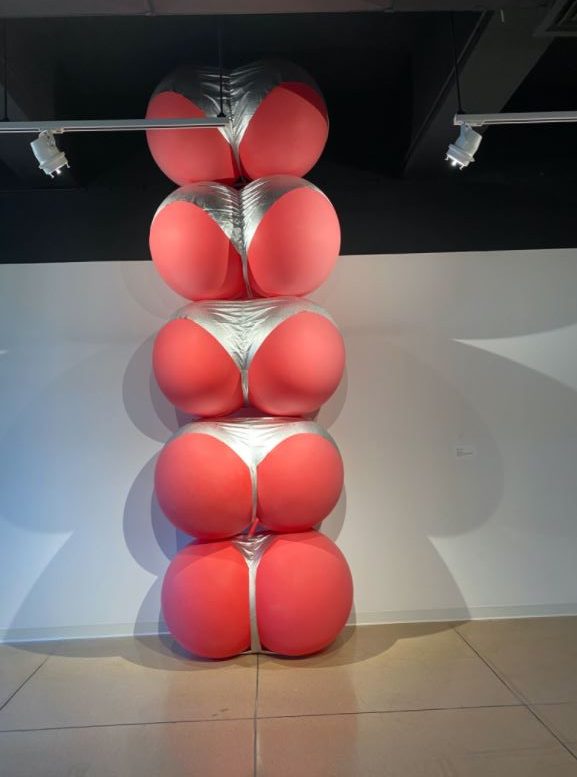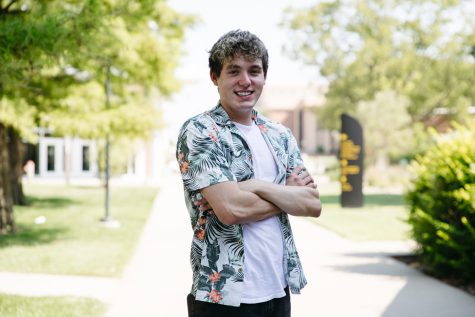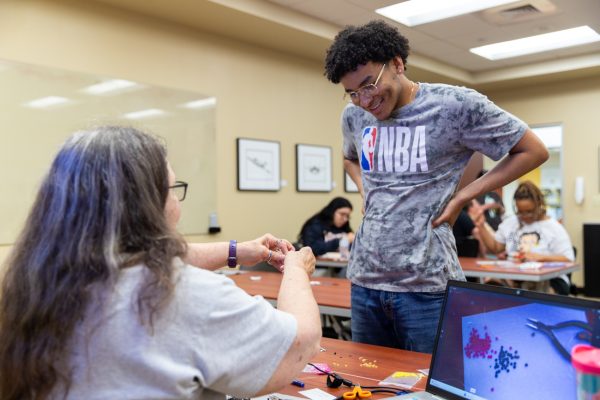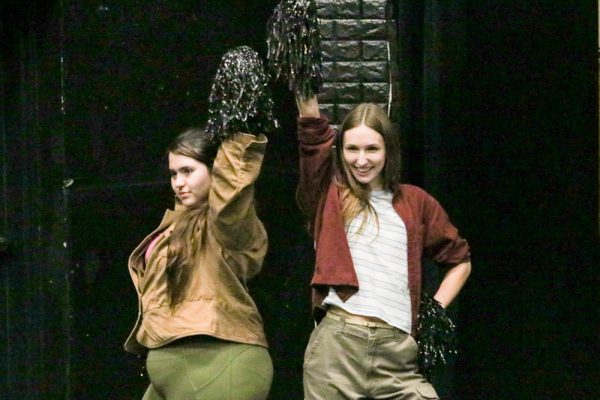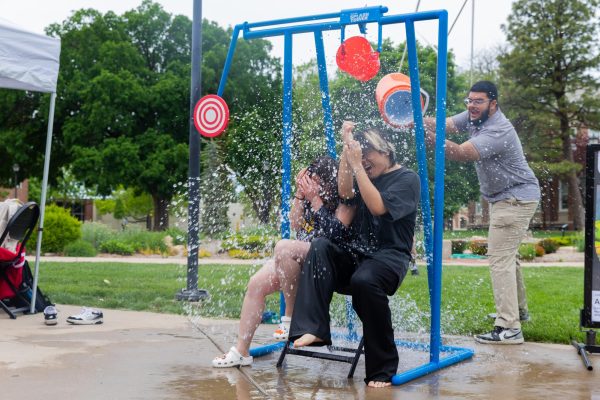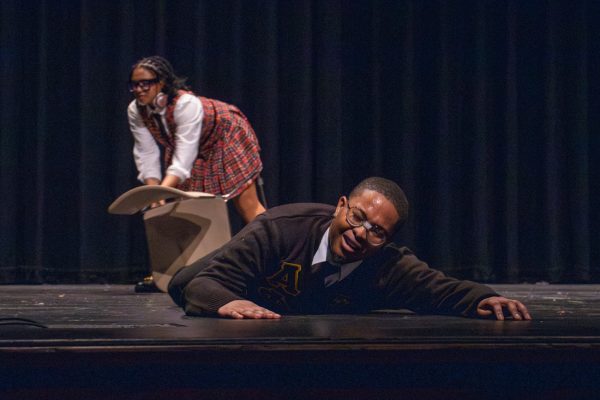Nancy Davidson’s ‘Buttress’ serves as a ‘Celebration of the human condition’
Nancy Davidson displays her work ‘Buttress’ at the Ulrich Museum of Art Tuesday night.
The Ulrich Museum continues their series of “Voices from the Vault” featuring the work of Nancy Davidson. The “Voices from the Vault” series highlights decades leading up to the 50th anniversary of the Ulrich Museum, which is steadily approaching in 2024.
Nancy Davidson is a very accomplished artist, “a sculpture, installation artist, and photographer that uses inflated weather balloons to challenge the notions of contemporary monumental sculpture.” Her art has been featured in the Krannert Art Museum, the Institute of Contemporary Art, the Museum of Contemporary Art, and Walker Art Center.
Her work on display was titled “Buttress” a 15 ft tall, 5 ft wide, large display of inflated weather balloons, that stacked from the floor to the ceiling. The balloons were covered with garments that went around them, revealing a major part of the human body.
“Buttress” displayed 5 red weather balloons that were used in a rotational pattern, showing the differences of the human body. Nancy described it as “a celebration of the human condition,” as it showed both men and women’s gluteus maximums.
Nancy was in New York when the World Trade Centers were hit on 9/11, and has used it as a motivation to create art. She began to discover her own mythology and became enraptured by the midwestern Cowgirl.
Much of her work has been dedicated to portraying the Cowgirl, using weather balloons to achieve her goals. She vitalizes humor to allow the audience to be engaged with the work. She described her work as “supporting the room, taking over the room…. the stacked form with gender differences, I am bringing the body back into abstract form.”
The work as a whole was very different from much of the art displayed already in the Ulrich, having both serious and comedic elements. There is a sort of humanness that is both funny but also displays the distinct differences that set us apart as humans.
The design aspects were also very different, Nancy took a different approach to modern works of sculpture, using creativity to guide her. There was a simpleness and complexity at the same time, alluding to not only the deep issues of what Nancy described as “fleshiness,” but also pointing to the fact that societal standards are somewhat ridiculous.
For students of art, Nancy gave the following recommendation: “The most important thing is to think about what it [a piece of art]means to you, I think what happens with young artists is we all get taken up with other people’s ideas or what we see in the magazines or what we hear. What does it mean to you though? What do you want your work to mean? This is hard for young artists because faculty and friends might say ‘I don’t like this work of yours’ or ‘you should try something else.’ I think it is important to hear what people are saying, I think it is important to write down what you think about and hear. Don’t make changes to your work until you have written about it and thought about it, and if that makes sense to you then go ahead and make the changes. If not, then keep looking at what you’re doing and try to understand why.”
The next event in the “Voices from the Vault” series will be on November 30th.



